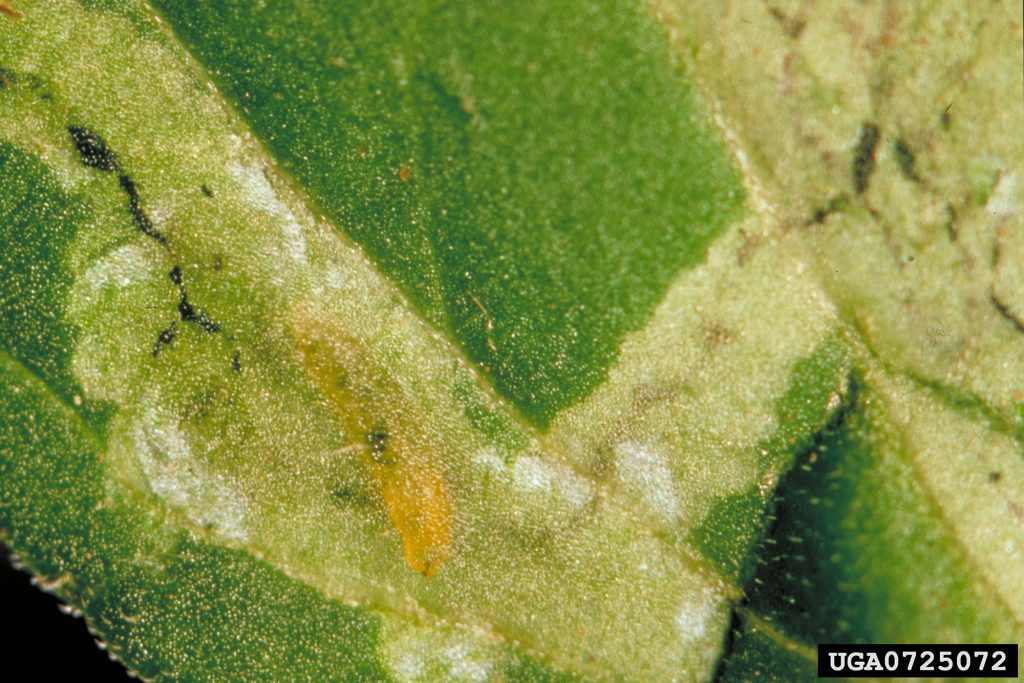The once exotic serpentine leafminer is now considered established in NSW, Queensland and, most recently Victoria, with the tiny fly detected on a vegetable farm in Werribee.
The serpentine leafminer is a major horticultural pest, and although it can occur in grains, economic damage to broadacre crops is unlikely.
In this article we’ll look at leafminer identification and what the establishment of serpentine leafminer in Victoria and NSW means for grain growers.
An introduced pest in Australia
The serpentine leafminer (also known as pea leafminer) (Liriomyza huidobrensis) is a cosmopolitan insect pest distributed across the Americas, Asia, Africa, Middle East and Europe. In 2020, serpentine leafminers were first detected in Queensland and New South Wales and have recently been identified in Victoria.
Originally from South America, the serpentine leafminer spreads across continents by transportation in infested plant material, soil and packaging.
While heavily infested plants are easily recognisable by the mined tunnels, which appear whitish on the leaf surface, early infestations are not clearly detectable.
Identification of serpentine leafminer
The serpentine leafminer belongs to the phytophagous family of Agromyzidae, which has several thousand species. Only a few species are known to be major pests of agriculture and horticulture, but unfortunately the serpentine leafminer is one of them.
Belonging to the genus Liriomyza, which has more than a hundred very similar species, identification can be very challenging.
The majority of Liriomyza spp. larvae feed on leaf plant tissues and the mining activity on leaves does not distinguish one species from another.
The adult flies are very tiny (<2.5 mm), black with yellow markings on their head and thorax.
Next to impossible to identify by eye, the serpentine leaf miner is easily confused with other introduced pest species such as the cabbage leafminer (Liriomyza brassicae), the American serpentine leafminer (Liriomyza trifolii), and the vegetable leafminer (Liriomyza sativae). All of these species are major pests in horticulture.
However, the serpentine leafminer can be also confused with endemic leafminers, which do not have economic impact on yield.
For the identification to species level microscopic analysis or molecular diagnostics are necessary.


What does the occurrence of serpentine leafminer mean for grain growers?
Detected in over 250 plant species, the serpentine leafminer is an important agricultural pest of many economically important crops. While overseas, it is a cause of serious damage in horticultural crops, this species is not likely to be a major threat to grain yield even though many broadacre crop species are hosts.
Should the serpentine leafminer require management in broadacre crops in the future, an integrated pest management approach will likely be necessary as the serpentine leafminer is known to develop insecticide resistance against frequently used insecticides.
Luckily, there are a number of parasitoid species in Australia known to help control leafminers. Parasitoid wasps are often very effective at suppressing leafminers.
For more information
Exotic Liriomyza leafminers – Agriculture Victoria
Management of leafmining flies in vegetable and nursery crops in Australia
Monitoring to support integrated pest management of leafminer pests in Australia
Serpentine leafminer – NSW DPI
The serpentine leafminer detected in Australia
Acknowledgments
Thanks to Dr Cornelia Sattler as lead contributor to this article.
Cover image: Photo by Central Science Laboratory, Harpenden, British Crown, Bugwood.org, CC BY-NC 3.0 US





